主创建筑师 | 刘雪丹、曹伟
设计团队 | 李裕瑶、范光颖、李寅、郭凯玥
项目地址 | 安徽省合肥市包河区大圩镇
项目面积 | 约3239㎡
设计机构 | 安徽科图建筑设计院有限责任公司
▼

俗话说“一方水土养一方人”, 民宿的设计主要是让游客体验独特的当地文化和自然风光,尽管江淮地区建筑受南北两方的建筑影响都很大,存在很多相似之处,但是经过不断地发展江淮建筑也形成了自己的特色,本次乡建项目以江淮民居在地性表达作为切入点,挖掘江淮民居在地性价值,总结设计手法,为江淮建筑设计的发展提供了微薄力量。
PROFILE MAP
剖面图

©安徽科图建筑设计院有限责任公司
中国自古就有顺“势”而为的说法,以势建造在建筑设计中至关重要,“势”一方面是地势,另一方面则是人势。在地势上,一是要顺应当地气候,符合当地人的居住习惯;二是要顺应地面高差建造,减少对自然环境的破坏。在人势上,设计对应目标人群的定位,顺应目标人群的实际需求。项目所在原场地地面存在不规则高差,建筑设计在地势上完全顺应了地形的坡度。
AXONOMETRIC DRAWING
轴测图

©安徽科图建筑设计院有限责任公司
PLANE PLANNING
平面规划

一层平面图 ©安徽科图建筑设计院有限责任公司

二层平面图 ©安徽科图建筑设计院有限责任公司
▍背景 Background
随着城镇化进程的发展,当今城市形象变化巨大,但同时伴随了乡村逐渐失去活力,出现了大量的“空心村”。圩美磨滩民宿项目是一个空心村再生实践项目,位于安徽省合肥市包河区大圩镇,北临淝河湿地公园,东临巢湖,四周农田环绕。
With the development of urbanization, the image of today’s cities has changed greatly, but at the same time, with the gradual loss of vitality of the countryside, a large number of “hollow villages” have appeared. Wei Mei Motan Homestay project is a hollow village regeneration practice project, located in Dawei Town, Baohe District, Hefei City, Anhui Province, near Feihe River Wetland Park in the north, Chaohu Lake in the east, surrounded by farmland.

©任腾视觉
设计师通过阅读大量江淮地区的资料,从江淮地区的文化根源中获取灵感,根据当地自然气候的建造法则,以周围民居为原型进行设计。在设计过程中不局限于传统江淮建筑的外观、体量与尺度,重新组织建筑与庭院的关系,梳理动线,并根据空间新定义考虑的其使用需求,采用灵活的现代手法来丰富建筑与空间层次。
Through reading a large number of materials in the Jianghuai region, the designer draws inspiration from the cultural roots of the region and designs the surrounding dwellings according to the construction rules of the local natural climate. In the design process, not limited to the appearance, volume and scale of traditional Jianghuai architecture, reorganize the relationship between architecture and courtyard, sort out the moving lines, and consider its use requirements according to the new definition of space, adopt flexible modern techniques to enrich the architecture and space level.

江淮地区地处长江淮河之间,地形地貌多为低山、丘陵和岗地,江淮民居结合了北方中原一带的“合院式”和徽州地区“厅井楼居式”建筑特点,平面布局上更加紧密规整,建筑装饰追求简洁素朴,大部分为单层建筑,其中少部分为双层建筑。
Jianghuai region is located in the Yangtze river between huaihe river, landform is low mountains and hills and downland more, jianghuai dwellings is a combination of the north central plains area of “courtyard” and huizhou region “hall floor well house type” architecture characteristics, more tightly structured layout, architectural decoration pursuit is concise and simple, mostly in single building, a few for double construction.

民宿整体以黑白灰为主色调。墙面为白色的外墙涂料,顶面现代简洁檐口佐以小灰瓦装饰的硬山顶,既有传统的韵味又不失现代的简约气息。
B&b is in black, white and grey. The wall is white exterior wall paint, the top of the modern simple cornice with small gray tile decoration of the hard peak, both traditional charm and modern simplicity.

©任腾视觉


漫游汀步引导人们缓步而上,步入民宿之中。建筑主入口有一面浅水面,形成一个半环形廊道,通往民宿中心建筑“大堂吧”,代表着典型江淮建筑民居中的“堂屋”,演绎为当代民宿体验的一个复合型多功能的公共空间。连廊和青石板路嵌在不同空间形态和边界中,成为建筑之间活跃的媒介。依照设计师精心规划的路线游走,随着空间与时间的变化,步移景异,一步一景。
Roaming ting walk leads people slowly up into the home stay. There is a shallow water surface at the main entrance of the building, forming a semi-circular corridor leading to the lobby bar of the b&B center building, which represents the “lobby room” in typical Jianghuai residential buildings, and is interpreted as a compound multi-functional public space for the contemporary b&B experience. The corridor and the SLATE road are embedded in different spatial forms and boundaries and become active mediums between the buildings. According to the designer’s carefully planned route to walk, with the change of space and time, step by step scenery.


©任腾视觉

©任腾视觉
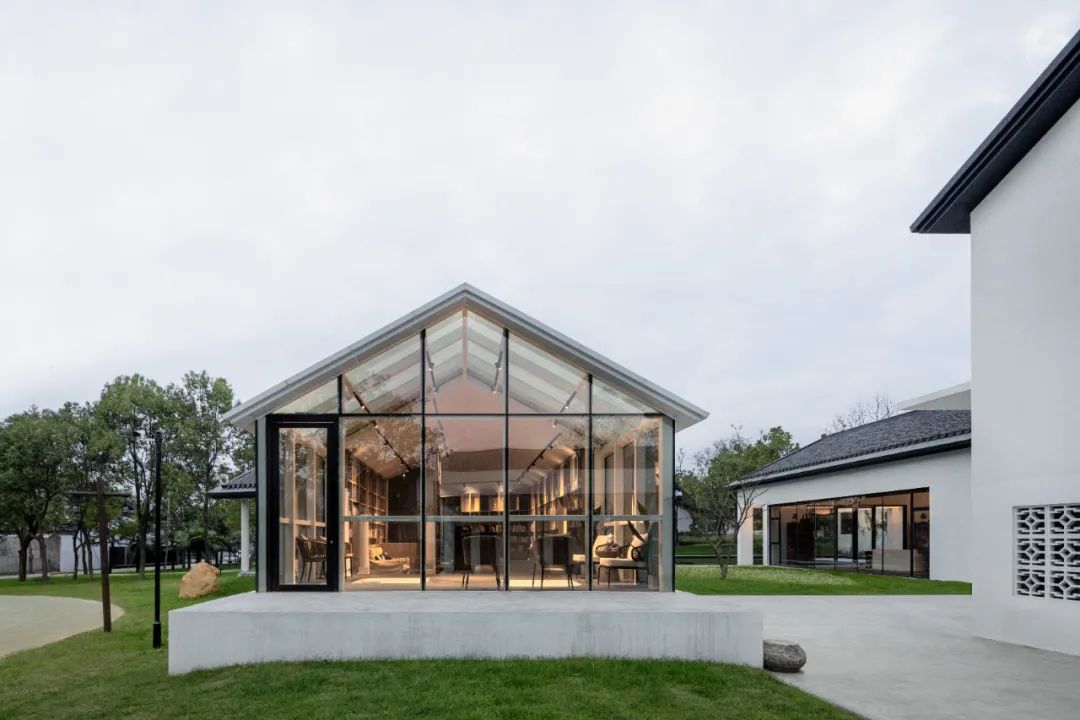
©任腾视觉
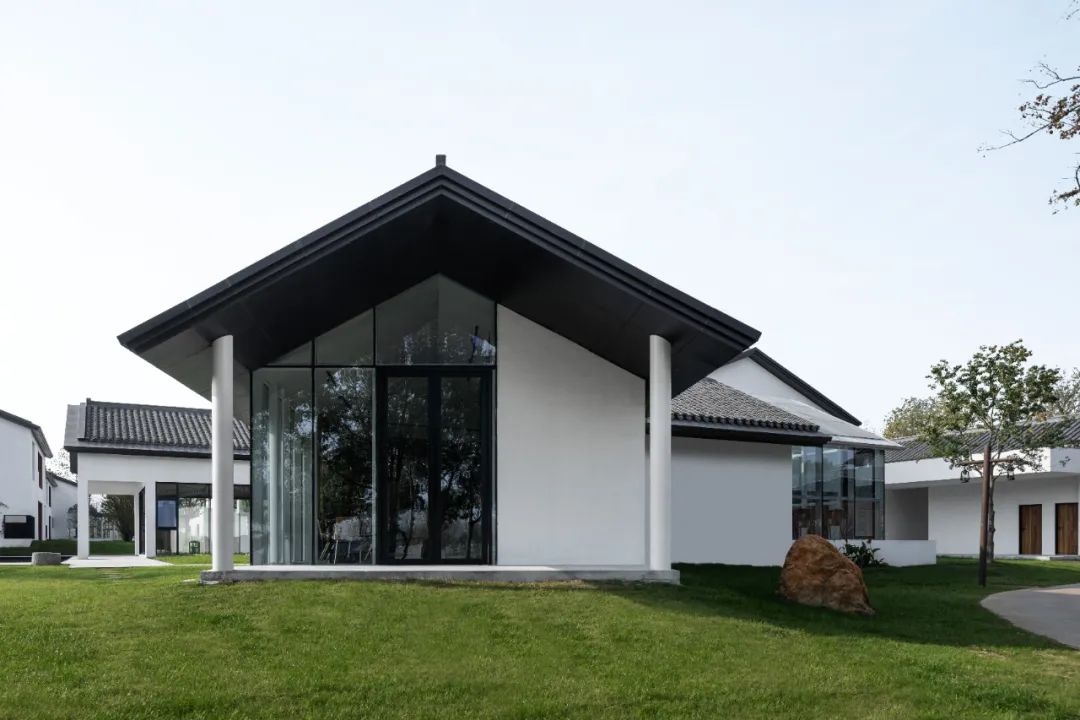
©任腾视觉

©任腾视觉

©任腾视觉

©任腾视觉

©任腾视觉

©任腾视觉

©任腾视觉

©任腾视觉
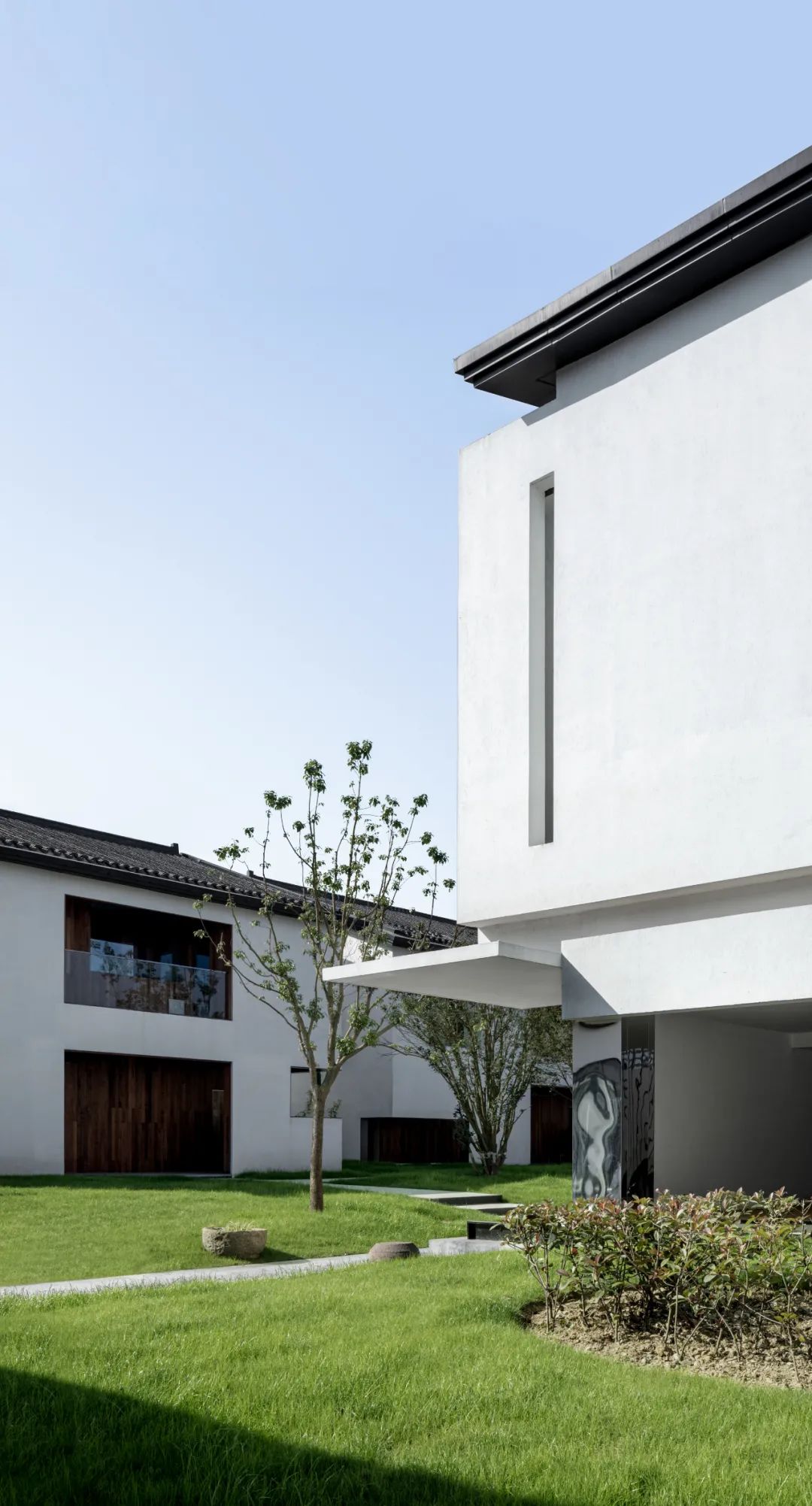
©任腾视觉
美术馆根据空间新定义考虑其使用需求,采用灵活的现代手法来丰富建筑与空间层次。
According to the new definition of space, the museum considers its use requirements and adopts flexible modern methods to enrich the architectural and spatial hierarchy.
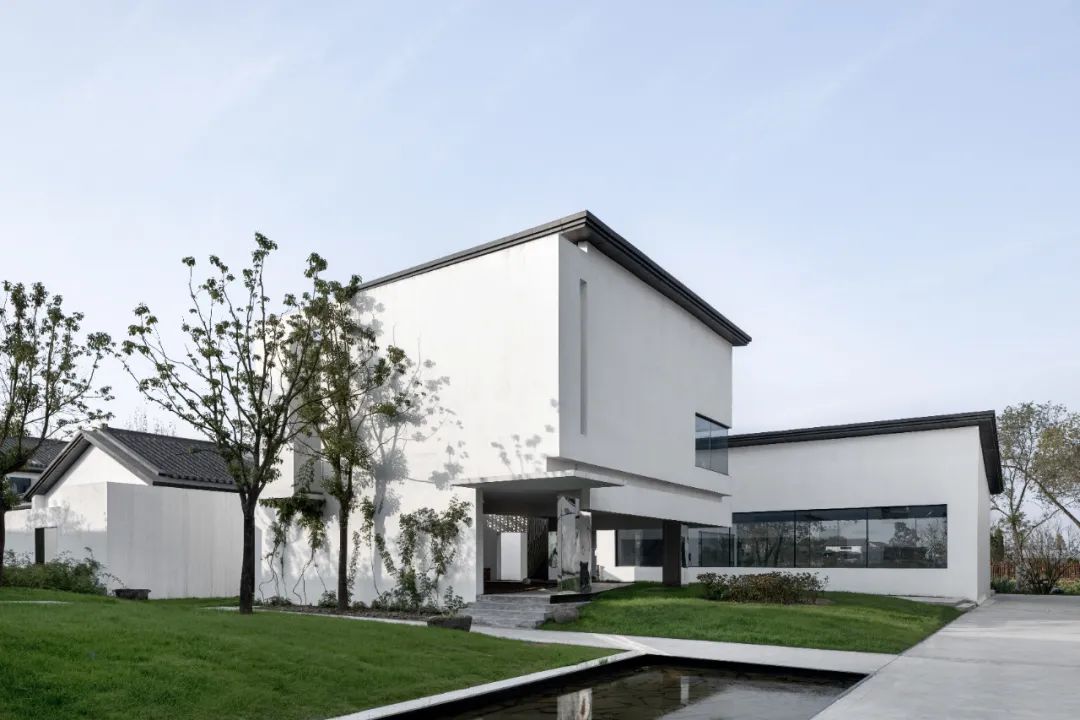
©任腾视觉

©任腾视觉
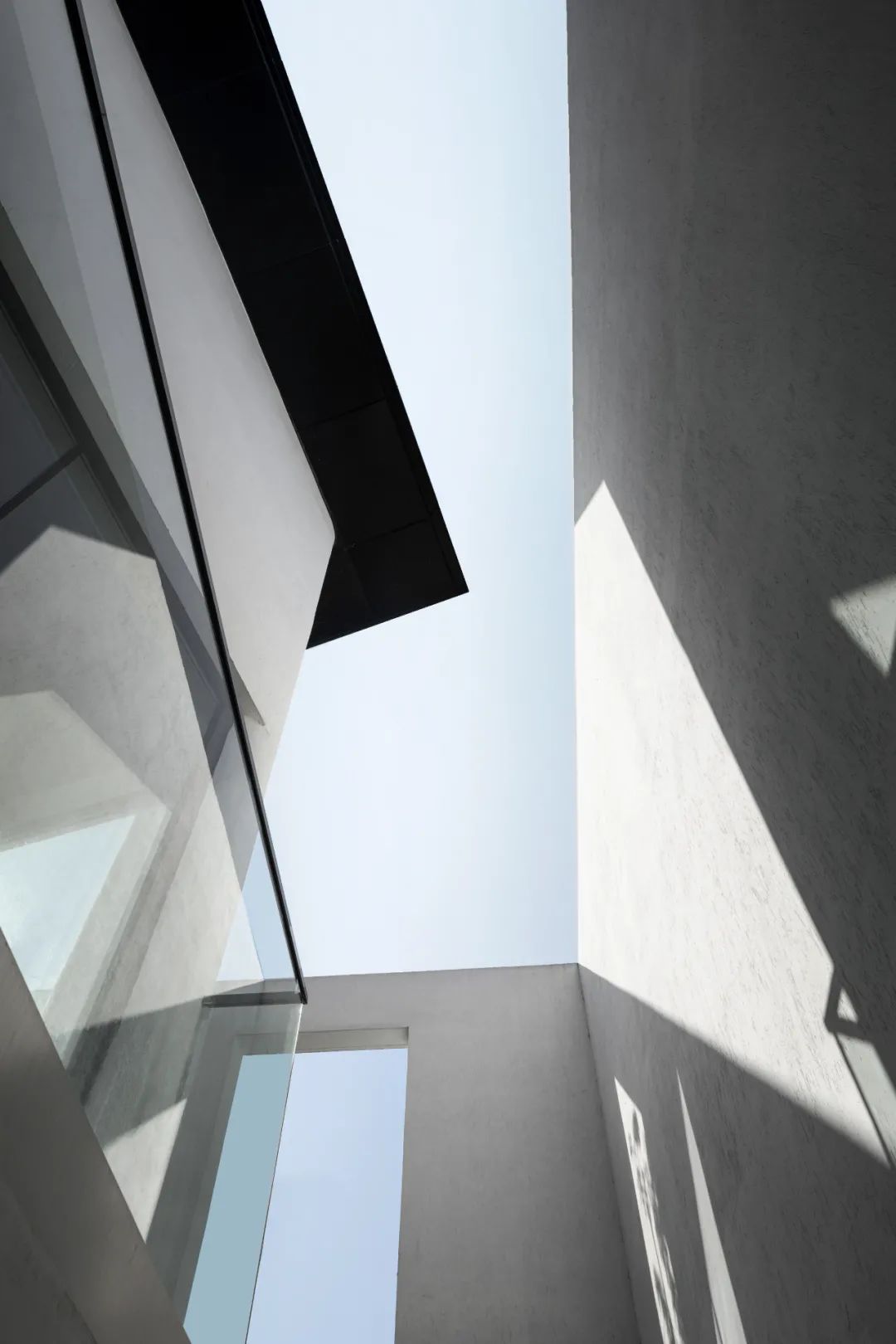
©任腾视觉

©任腾视觉

©任腾视觉
▍空间的表现形式 Expression of space
在传统江淮建筑的基础上,为了避免建筑的沉闷感,在大片的墙面上开了大片玻璃长窗,使建筑内部变得通透且有变化。
On the basis of traditional Jianghuai architecture, in order to avoid the dull feeling of architecture, large glass long Windows are opened on the large wall, so that the interior of the building becomes transparent and changeable.
©任腾视觉

©任腾视觉

©任腾视觉

©任腾视觉

©任腾视觉

©任腾视觉

©任腾视觉

©任腾视觉
▍模型 Model

©任腾视觉
▍总结 Sum up
俗话说“一方水土养一方人”, 民宿的设计主要是让游客体验独特的当地文化和自然风光,尽管江淮地区建筑受南北两方的建筑影响都很大,存在很多相似之处,但是经过不断地发展江淮建筑也形成了自己的特色,本次乡建项目以江淮民居在地性表达作为切入点,挖掘江淮民居在地性价值,总结设计手法,为江淮建筑设计的发展提供了微薄力量。
As the saying goes, “one party soil to raise a party person”, the design of the home stay facility is mainly let tourists experience the unique local culture and natural landscape, although the yangtze-huaihe region construction is affected by the construction of the north and south on both sides are very big, there are a lot of similarities, but after constantly develop jianghuai construction also formed their own characteristics, the township building project in jianghuai local-style dwelling houses in sexual expression as the breakthrough point, Excavating the local value of residential houses in Jianghuai and summarizing the design techniques provide meager power for the development of architectural design in Jianghuai.







































